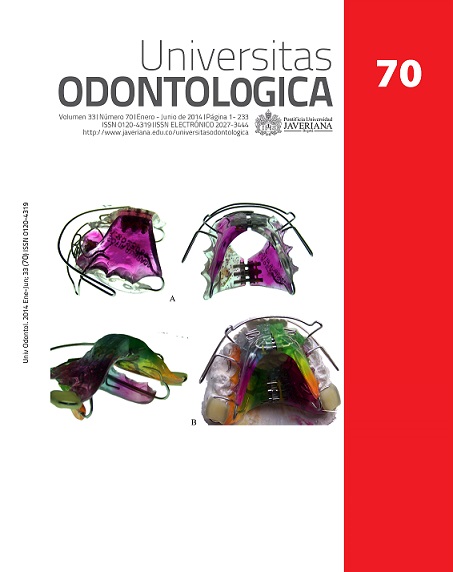Abstract
Background: The presence of two or more craniofacial abnormalities may be associated with developmental syndromes and/or genetic defects. Identifying minor and major anomalies helps early detection, referrals to a specialist, and diagnosis of malformations of congenital origin. Purpose: To design, test, and validate an instrument to detect minor and major clinical craniofacial anomalies that may be associated with congenital conditions. Methods: A descriptive pilot study was carried out with a sample of 34 5-to-17-year-old schoolchildren (21 girls and 13 boys). Photographs and craniofacial anthropometric measurements were taken and variables were analyzed descriptively. Results: Findings showed one schoolchild with major abnormality (cleft lip and palate) macrocephaly (35%), microcephaly (17%), mesoprosopic (8.82%), euryprosopic (5.88%), leptoprosopic (85.29%), hair distribution abnormalities (67%), facial asymmetries (76%), narrow forehead (44%), metopic depression (one child), eye abnormalities such as epicanthal folds (26%), nose abnormalities (11%), ear abnormalities (64%), preauricular appendix (one child), mo and data analysisfrequency anduth abnormalities (35%), and tooth anomalies (58%). Conclusion: The instrument of this study was designed for massive application in communities and should be complemented with genotype analysis in cases with two or more minor abnormalities or other relevant findings.
KEYWORDS
craniofacial anomalies; anthropometric; measurements; systemic; conditions; congenital
This journal is registered under a Creative Commons Attribution 4.0 International Public License. Thus, this work may be reproduced, distributed, and publicly shared in digital format, as long as the names of the authors and Pontificia Universidad Javeriana are acknowledged. Others are allowed to quote, adapt, transform, auto-archive, republish, and create based on this material, for any purpose (even commercial ones), provided the authorship is duly acknowledged, a link to the original work is provided, and it is specified if changes have been made. Pontificia Universidad Javeriana does not hold the rights of published works and the authors are solely responsible for the contents of their works; they keep the moral, intellectual, privacy, and publicity rights.
Approving the intervention of the work (review, copy-editing, translation, layout) and the following outreach, are granted through an use license and not through an assignment of rights. This means the journal and Pontificia Universidad Javeriana cannot be held responsible for any ethical malpractice by the authors. As a consequence of the protection granted by the use license, the journal is not required to publish recantations or modify information already published, unless the errata stems from the editorial management process. Publishing contents in this journal does not generate royalties for contributors.


